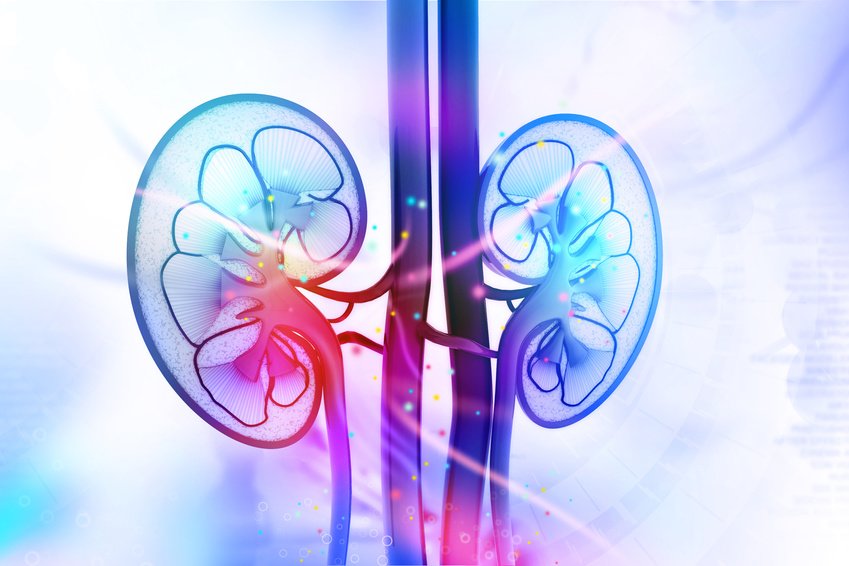
We already know diabetes and histamine are linked. And along with diabetes often comes diabetic nephropathy, the kidney damage that often occurs as a side effect of chronically elevated blood sugar. While searching for solutions, scientists came across the histamine H3 and H4 receptors as potential targets for therapies.
HOW DIABETES IS LINKED TO HISTAMINE
In both human and animal studies, diabetics have higher levels of histamine in the blood and tissues. In animal studies, diabetes has been shown to cause a decrease in the histamine-degrading enzyme diamine oxidase (DAO), resulting in increased histamine levels.
Because the histamine 3 receptor is expressed in key areas of the central nervous system (CNS), scientists have been seeking out blockers for this receptor that may be able to treat cognitive disorders, sleep disorders, and manifestations of metabolic syndrome, like obesity and diabetes.
In fact, blocking the histamine 3 receptor (H3) was shown to reduce blood sugar levels in diabetic patients.
The histamine 4 receptor is primarily expressed in the cells and tissues of the immune system, which indicates a potential for blockers that help with immune-related disorders, such as allergies and asthma.
While a histamine 4 receptor blocker did not affect blood sugar levels in studies, it was protective against diabetic nephropathy by way of its positive effects on kidney function directly and on the immune system.
HOW TO MEDIATE HISTAMINE’S EFFECT
To lessen the effect of histamine on a diabetic patient, it would be wise to go at it from both directions: address the histamine intolerance by lowering histamine levels and address the diabetes by balancing out blood glucose levels.
Beyond following a low histamine diet, as outlined on this site, it would also be prudent to increase levels of diamine oxidase (DAO) to help lower histamine. To learn how to do so through food and nutrients, read my post How To Naturally Boost Production Of The Histamine Degrading DAO Enzyme.
Additionally, you might want to ask your doctor about a nutrient-dense, lower carbohydrate diet. This means being highly aware of the (even natural) sugars in your diet — perhaps even leaving the carbs for later in the day, like for dinner, to avoid the constant blood sugar peaks and valleys throughout the day.
At a loss for what to make for dinner? (Or breakfast or lunch, for that matter?) Check out one of my Anti-Cooks (regular or Paleo) for some great recipe ideas.
There are also specific antihistamine foods that also help balance out blood sugar levels. Some great options are listed below.
BENEFICIAL FOODS WITH ANTIHISTAMINE PROPERTIES
These foods, herbs, and spices not only have anti-inflammatory and/or anti-histamine properties, but are also blood sugar balancing.
Apple cider vinegar (the only acceptable vinegar for histamine intolerance; helps balance blood sugar)
Bitter melon
Cherries (especially tart cherries)
Fenugreek
Ginseng
Garlic
Ginger
Oregano
Prickly Pear/Nopales cactus (which is also highly anti-inflammatory and antihistamine)
Sage
Additionally, check out the flavonoids found in all of my recipes in the 28-day histamine reset.
WHAT DOES PRE-DIABETES LOOK LIKE?
Prediabetes is what you’re diagnosed with when you’re on your way toward diabetes, but not there yet.
Prediabetes is determined by blood glucose or A1C levels—which reflect average blood glucose levels over the last 3 months—which are higher than normal but not high enough for a diagnosis of diabetes. There may not be other signs or symptoms. However, some risk factors for the condition include being overweight, having high blood pressure, and an HDL cholesterol level below 35 mg/dL or a triglyceride level above 250 mg/dL.
A diagnosis of pre-diabetes means it’s time to get serious about your diet and lifestyle. There’s still hope for turning things around!
PREVENTING DIABETES
It’s certainly possible to prevent diabetes (unless, of course, you were born with it). Diet is paramount. A disease of blood sugar imbalance certainly calls for a diet that supports balanced blood glucose levels.
A systematic review study published in 2013 in the American Journal of Clinical Nutrition analyzed several diets used as a therapy for diabetes. After assessing the data from 20 Randomized Controlled Trials, the authors concluded that Low-carbohydrate, Low-Glycemic Index, Mediterranean, and High-Protein diets were all effective in lowering risk factors in diabetics and recommended following one of these diets to help control diabetes.
Exercise and weight loss also go a long way in helping to improve insulin sensitivity and lower your risk of developing diabetes.
So! Get outside and get some exercise AND get in the kitchen and embrace your inner Julia Child (or Jacques Pepin). Both histamine and diabetes can be addressed at once, starting in the produce section of your local grocery store.
To help you kick off your new healthy lifestyle, I’ve created my Histamine Reset, with a kitchen detox, food ideas, recipes, and anti-stress meditation ideas. Start lowering your inflammation bucket and improving your health and energy levels today. Your body will breathe a sigh of relief!
——— REFERENCES ————
Fogel, W. A., Chmielecki, C., Grałek, M., & Maslinski, C. (1990). Histamine metabolism in diabetic rats. Agents & Actions, 30(1-2), 243–246. Retrieved from: https://link.springer.com/article/10.1007/BF01969050
Gill, D. S., Barradas, M. A., Fonseca, V. A., Dandona, P. (1989). Plasma histamine concentrations are elevated in patients with diabetes mellitus and peripheral vascular disease. Metabolism, 38(3), 243-247. Retrieved from: https://www.ncbi.nlm.nih.gov/pubmed/2918844
Paoli, A., Rubini, A., Volek, J. S., & Grimaldi, K. A. (2013). Beyond weight loss: a review of the therapeutic uses of very-low-carbohydrate (ketogenic) diets. European Journal of Clinical Nutrition, 67(8), 789–796. http://doi.org/10.1038/ejcn.2013.116
Pini, A. et. al. (2018). Histamine H4 receptor antagonism prevents the progression of diabetic nephropathy in male DBA2/J mice. Pharmacological Research, 128, 18-28. https://doi.org/10.1016/j.phrs.2018.01.002
Rao, A. U., Shao, N., Aslanian, R. G., Chan, T.-Y., Degrado, S. J., Wang, L., … Palani, A. (2012). Discovery of a Potent Thiadiazole Class of Histamine H3 Receptor Antagonist for the Treatment of Diabetes. ACS Medicinal Chemistry Letters, 3(3), 198–202. http://doi.org/10.1021/ml200250t













